Airspeed Horsa Pegasus Bridge
English Transaltion
.jpg) |
Introduction
L’utilisation des planeurs et de troupes parachutistes lors des combats a été initiée par les forces allemandes pendant la 2e guerre Mondiale
Le 10 Mai 1940 onze planeurs allemands DFS230 ont décollé de Cologne avec la forteresse Eben-Emael forteresse comme cible C'était un formidable défi parce que la forteresse d'Eben-Emael, en Belgique, construite en 1935, est une cible puissante avec un formidable arsenal de six canons de 120 mm avec une portée de 16kms dix-huit canon à tir rapide de 75 mm et de douze canons de 60 mm à haute vitesse et pour finir des canons anti-char.
A cela s’ajoute sur le toit de l’ouvrage des pièces Anti aériennes et 25 MG pour la défense intérieure de l’ouvrage et des pièges anti chars tout autour
Eben-Emael n'était donc pas une noix facile a casser Mais! Pour voir la suite ici (bientôt)
Le Planeur d’Assaut est un moyen d'infiltrer des troupes légèrement armées mais spécialisés directement sur l'objectif à attaquer .Les troupes d’assaut par planeur arrivent aussi sur leur zone d'atterrissage en groupes, plutôt que séparées comme dans un atterrissage en parachute classique
Histoire
Le 10 Mai, 1940, Winston Churchill devint premier ministre britannique, le jour même de la chute du fort d'Eben Emael et rapidement, le 22ème Juin Churchill a envoyé une note au chef d'état-major:
"Nous devons avoir un corps d'au moins 5000 soldats parachutistes, j'ai entendu dire que quelque chose est fait pour former un tel corps, mais seulement je crois, sur une petite échelle. Il faut tirer profit cet été d’entraîner ces forces qui peuvent néanmoins jouer leur rôle en cas d’invasion
Le 21 juin la Central Landing School ouvre sur la base RAF de Ringway à Manchester pour dans un premier temps enquêter sur les besoins logistiques de l'utilisation des parachutistes et des troupes transportées par planeur. Le 6 août 500 bénévoles ont déjà été formés en tant que parachutistes.
Mais pour le Premier ministre l’assaut par des troupes parachutiste est quelque peu dépassé et c’est l'utilisation du planeur qui doit être privilégié
Le 9 Septembre 1940 le chiffre de 1.000 hommes a été jugé réaliste donc 900 seraient transportés par planeur.
Au total, d'ici le printemps 1941, le War Office prévoit 2700 hommes pouvant être transportés par planeur troupes et 360 pilotes.
Le Glider Training Squadron est mis en place, sous le commandement du Squadron Leader SE Hervey, MC. en utilisant des avions Swallow dont l’hélice a été enlevée.
Ironie du sort, sur les quatre planeurs d’entrainement trois ont été construits en Allemagne
Le 20 Septembre 1940 le Duke de Kent assiste à une démonstration impliquant deux exercices avec des planeurs remorqués En octobre 1940, 65 hommes du 2e Commando sont transportés sur 10 kilomètres par 2 Avro 504 et 4 planeurs
Ils sont rattachés à l’Army Co-operation Command squadrons pour la formation préalabele avant la conversion comme glider coxswains (nom initial retenu pour les pilotes de planeur).
En décembre 1940 le premier Glider Wing est formé Mais durant le printemps 41, les événements vont se précipiter avec le 20 Mai l’invasion de la Crète avec les parachutistes allemands ( opération Merkur)
Churchill exige une réaction immédiate et il a été convenu que l'Armée devra fournir des pilotes que la RAF devra former et qualifier.
Pour contrer les problèmes qui peuvent survenir avec les unités mères dont sont issues ces volontaires il a également été décidé de former un nouveau Army Air Corps autonome avec deux régiments, the Glider Pilot and the Parachute. Le premier a été créé par Arrêté le 24 Février 1942.
500 volontaires ont été formés en tant que parachutistes.
Les débuts
General Aircraft Hostpur
.jpg) |
AU début les britanniques vont utiliser le planeur General Aircraft Hostpur Le prototype a été construit et vole le 5 Novembre 1940 et le premier exemplaire arrive à Ringway le 6 Février 1941, il pouvait transporter huit avec tout leur équipement et une cargaison de 850 kg
A plein charge il pèse 1,630 kgs Il mesure 12m de long pour une envergure de 14m.
1015 Hostpur ont été construits pendant la guerre.
General Aircraft Hamilcar
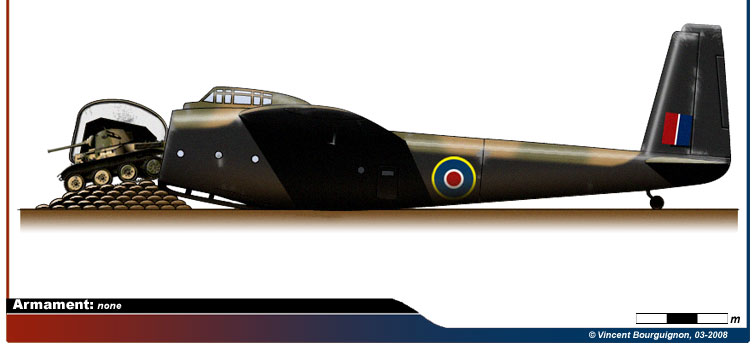 |
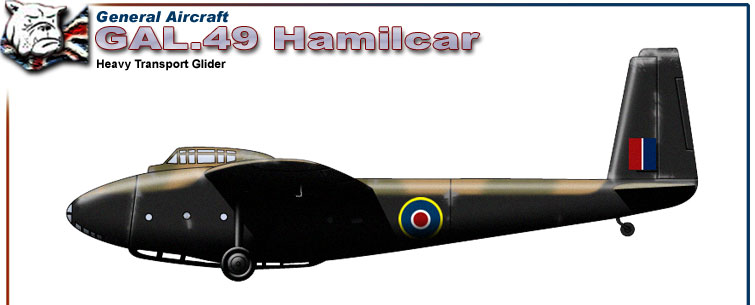 |
| Merci à Vincent |
Le cahier des charges donne naissance au programme appelé X.27/40
Le programme veut un planeur capable de transporter un char léger (L’URSS au début de 1935 a testé ce moyen de transport avec le T-37 monté sous les ailes d’un bombardier TB-3). Air Ministry and War Office donne ce contrat à X.27/40 à General Aircraft sans appel d'offres.
Initialement baptisé GAL49, le nouveau planeur est baptise ensuite Hamilcar
412 Hamilcar furent construits pendant la guerre. Il a une envergure de 33.5m et, à pleine charge, il pèse 16329kgT Il a 2 pilotes en tandem qui sont assis à 7.5m au dessus du sol. Les passagers ont été rarement transportés alors que quarante soldats pouvaient prendre place dans zone fret du planeur . Le planeur a surtout servit à transporter le char léger Tetrarch
L'Airspeed Horsa
Tout d'abord, nous allons trouver le planeur Slingsby Hengist qui est le frère du Horsa (18 ont été construits) Il 'a été conçu comme un substitut du Horsa si celui-ci n'avait pas fonctionné
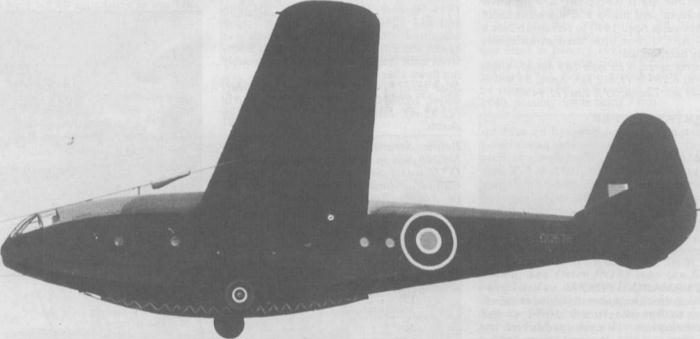 |
| Slingsby Hengist |
Le Horsa est considéré comme un planeur robuste et très maniable, et il est nettement plus grande que l'American Waco CG-4A (. 30 hommes et une charge de transport beaucoup plus grande par rapport à la CG-4A qui lui ne transporter que 13 soldats au maximum. Il diffère de la CG-4A dans la mesure où il a été construit entièrement de bois. Son harnais de traction est fixé sur les 2 ailes contrairement au CG-4A l dont le câble s’attache au nez de l'avion.
Après le programme X.26/40 Airspeed Ltd a été chargé de la mise au point d »un planeur de 25-places, qui pourrait également être utilisé pour le transport de matériel, tels que des jeeps, des remorques.
Air Ministry commande sept prototypes (DG597, DG603, DG609, DK346, DK349, DK353, et DK358). Deux sont fabriqués et assemblés à dans les usines Fairey et ils serviront d’avons d’essais en vol. La production totale sera construite par Airspeed et les sous-traitants y compris Austin Motors et Harris Lebus Quelques Horsa furent utilisés par l’USAF
La version de serie du planeur aura 32 sièges, alors que le maximum d'embarquement est de 28 ( ce qui est la dotation normale d’un Airborne platoon Le planeur Horsa a été nommé, d’ après le nom de mercenaires germanique du 5ème siècle. Le prototype a pris l'air le 12 Septembre 1941 accroché derrière un bombardier Armstrong Siddeley Whitley
Le premier modèle de production sort de chaine en Juin, 1942 et peu après cette date, l’ Horsa commence à entrer en service dans la RAF, opérationnellement remorqué par les avions du RAF Transport Command. Ils ont été utilisés pour transporter les hommes et les matériels de l'air d'atterrissage des Brigades de la 1re et la 6e Airborne Division, piloté par des hommes de British Army’s Glider Pilot Regiment, mais aussi, au fur et à mesure que cela était nécessaire, par des pilotes de la RAF. Il est impossible de citer des chiffres précis pour la production Horsa. Ceux ci comprennent 470 Mk I et 225 Mk II construite parAirspeed plus sept prototypes; 300 Mk I et Mk II 65 par l'Austin Motor Company et 1641 Mk I et Mk II de 1271 par les sous-traitants de l'industrie du bois, la plupart produites par le fabricant de meubles Lebus Harris. Cela équivaut à un total de 3799 Horsa construit ,
Ils furent construits en modules et pour la construction il fut donc utilisé toutes les installations nécessaires pour cette production des plus urgentes par conséquent, la production était répartie entre nombres d’ usines distinctes ce qui auraient limité les dégâts en cas d'attaque aérienne allemande.
Le Horsa est monoplan à aile haute cantilever en bois de même que son fuselage semi-monocoque. Le fuselage a été construit en trois parties boulonnées ensemble, la section avant avec le poste de pilotage ,le compartiment central pour le chargement du fret et des troupes la partie arrière avec la queue Il avait un train d'atterrissage tricycle fixe et il a été l'un des premiers planeurs équipés d'un tricycle pour le décollage. Le train principal tricycle est également largable et une roue avant, en combinaison avec un ski central qui absorbe les chocs sont utilisés pour les atterrissages Le ski central est utile pour les atterrissages surtout en terrain accidenté.
L’aile a une longueur de 27m et alors que le fuselage fait 20m, L’Horsa pèse au total 6.91tons.
Lors des vols opérationnels ce qui pourrait être projeté et devenir dangereux à l’atterrissage est accroché aux cadres du fuselage. L'aile possède de grands volets qui, au moment de la descente vers la zone d’'atterrissage donne la possibilité aux pilotes d’atterrir sur des zones étroites.
Le poste de pilotage comporte deux sièges et des doubles commandes. La visibilité est excellente grâce à la grand verrière. La partie central possède une grande porte sur le côté bâbord. Cette porte peut également être utilisée comme une rampe de chargement. Le compartiment principal peut accueillir 15 hommes sur des bancs assis face à face
Nous trouvons 2 portes coulissantes une à l avant gauche sous l’aile et l’autre à l’arrière droit sous l’aileron tribord
Le fuselage peut se démonter à l'atterrissage permettant un déchargement rapide de troupes et de matériel .Trois containers de ravitaillement peuvent également être montés au centre sous les ailes La section arrière a été conçu pour être aussi démontée des rampes sont ensuite fixés au fuselage pour permettre le chargement, ou le déchargement Parfois, un explosif (léger) peut être utilisé pour désolidarisera l’arrière.
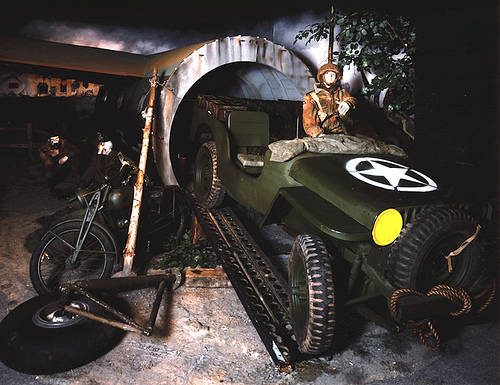 |
L’ AS.58 Horsa II possède un plancher renforcé afin de permettre le chargement et le déchargement de matériel. Le câble de remorquage pour le Horsa II est attaché au train d’atterrissage de la roulette de nez , plutôt que sur les ailes pour l’ Horsa I.
En opération, il a été remorqué par un C47 Dakota , ou des anciens bombardiers Halifax, Stirling Albemare
Versions
AS.51 Horsa I
Planeur avec points de fixation du câble en haut des jambes du train d’atterrissage principal
AS.58 Horsa II.
Développement du Horsa I, avec charnières dans le nez, permettant le chargement et le déchargement direct de l'équipement, Le câble de remorquage se trouve fixé sur la roulette de nez
US Gliders
WACO CG-4A
Le Weaver Aircraft Company (WACO) de Troy dans l’ Ohio, n'a pas commencé la construction des CG-4A (rebaptisé «Hadrian» par les Britanniques) qu’à la mi-1941. Le premier a été livré en avril 1942 et, près de 14.000 seront été construits jusqu’à la fin de la guerre,. Parmi eux, 750 ont été fournies à la GPR.
Le CG-4A a une envergure de 25m pour 14m de long et un poids de 3400kgs.
Son fuselage a été construite en acier. Les ailes étaient en bois et recouverte de contreplaqué. Le sol du planeur était aussi en contreplaqué. Les aéronefs étaient tous entoilés avec du tissu coton. Le poste de pilotage est amovible pour permettre le chargement et le déchargement de la cargaison .
Les planeurs alliés durant la 2e Guerre Mondiale
Opération Freshman 19 Novembre 1942
Opération «Freshman» doit permettre de détruire l’usine de production d’eau lourde à Vermok en Norvège. 2 planeurs Horsa sont utilisés, chacun portant quinze Airborne Engineers. Ce fut un échec Les planeurs ont survolé la zone pendant une heure sans rien localiser Lors du vol retour deux planeur et un remorqueur se sont écrasés avec plusieurs morts et blessés. La résistance Norvégienne a fait ce qu'elle pouvait pour les survivants, mais n'a pas pu empêcher leur capture par les Allemands. Les blessés graves ont été tués sur place et le reste fusillé le 18 Janvier 1943
Opération Husky en Sicile Débarquements 1943 9 Juillet 1943, / 17 août
.jpg) |
Le The 2nd South Stafford’s a été envoyé en 'Afrique du Nord en Mai 1943 avec la 1ère division aéroportée, afin de prendre part à la première invasion alliée de l'Europe, le débarquements en Sicile. L’opération a eu lieu le 10 Juillet 1943 et est précédée des parachutage et largage troupes afin de se saisir et de tenir des points stratégiques au sols en attendant l’arrivée des troupes ayant débarqué sur les cotes Ce fut la première grande opération aéroportée alliée de la 2e Guerre Mondiale
Deuxième Chindit campagne de printemps 1944
Deuxième opération Chindit qui a eu lieu entre Mars et Juillet 1944 Il s'agit de six groupes ou l'équivalence d’une brigade largués pour gêner la circulation des troupes japonaises et leur ravitaillement lors de l’avance alliée en Birmanie. Enfin, alliés aux troupes chinoises, ils ont capturé Mogaung, l'un des deux objectifs alliés fixés à la Conférence de Québec et ils ont aussi matériellement aidé à la capture de Myitkyina, Mais ces victoires ont été acquises chèrement Ils ont perdu 150 tués et plus de 250 blessés, la maladie a conduit à l’évacuation de 180 hommes
Opération D Day, l'opération «Tonga»
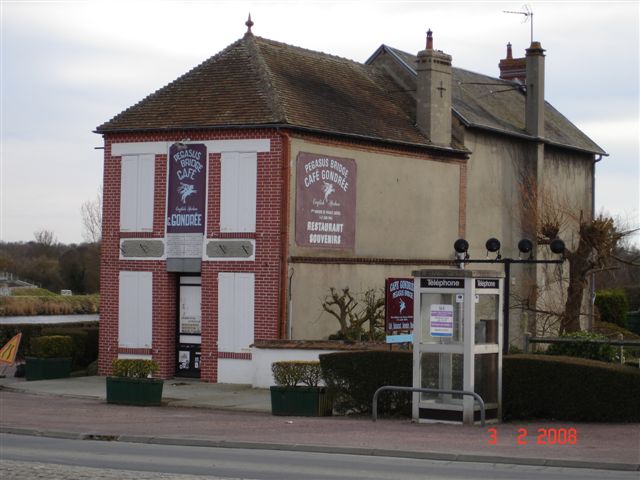 |
| Cafe Gondrée |
20% de la totalité du matériel livrés aux combattants du Jour J l’a été par air
Peu apres minuit le matin du 6 Juin 1944, une force de six planeurs Horsa transportant 139 hommes du Oxf & Bucks, avec 30 Royal Engineers, sous le commandement du Major R.J.Howard atterrissent dans l'obscurité pour capturer par surprise les ponts sur le canal de Caen (Pegasus Bridge) et de la rivière Orne (Horsa Bridge) L’attaque sur Pegasus Bridge est une totale réussite et le pont a tenu malgré les contre-attaques allemandes
Les Oxf & Bucks, rejoint par les 7 Para, seront relevés par les troupes débarquées
Pendant 2 jours la 6e division aéroportée entièrement établie sur la rive est de la rivière Orne a tenue de ce secteur vital malgré les attaques répétées de l’ ennemi.
Opération D Day, l'opération Mallard
Cette opération était une première dans l'histoire militaire. Vingt-neuf Hamilcar avec dans ses soutes un régiment blindé de reconnaissance se pose directement sur le champ de bataille
En outre, 229 Horsa amènent l’infanterie et l artillerie
Les américains du capitaine John Morrison, de 'G' Squadron, aéroporté appuyé par un peloton de l'Ox et Bucks s’empare de la position allemande capturant trois mortiers et un stock de munitions . A J+2 ils seront rapatriés sur l’Angleterre
Opération Dragoon 15 Aout 1944 Sud de la France
Le parc des . Horsa parc est également utilisés lors de l'invasion du Sud de la France.
Opération Market Garden Arnhem Septembre 17/25 septembre1944)
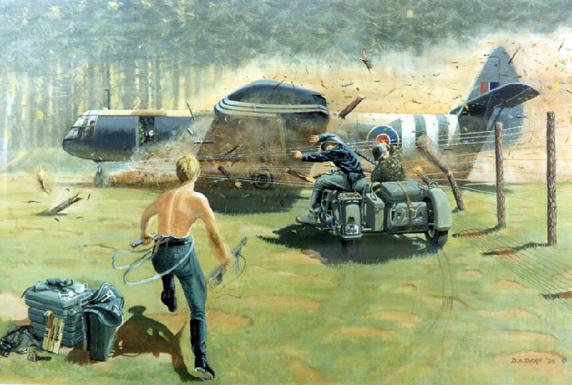 |
L'assaut d'une partie de la 1st Airlanding Brigade sous le commandement du Brigadier Hicks, a été scindé en deux éléments avec les B et D, compagnies arrivant les premières. Après avoir sécurisé la zone d'atterrissage, ils sont dirigés vers les ponts d »Arnhem, aidée par le 2e Para du Lt Col McCardie. Ils se tombent dans plusieurs embuscades, avant d'être bloqués par les allemands dans la région de St Elizabeth's Hospital.
Le reste du bataillon, arrivant avec la deuxième vague , est rejetée en arrière après être tombé dans plusieurs embuscades
Toutefois, en dépit des tentatives visant à coordonner une avance des 11 Para, 2nd South Staffords il fut impossible aux alliées d’atteindre les ponts et beaucoup, de combattants ont été perdus dans les combats de rue en cours de route. The Glider Pilot Regiment sa subi 90% des victimes lors de la bataille d'Arnhem
Ardennes La Bataille des Ardennes Décembre 1944 Janvier 1945
Les Glider sont envoyés en Belgique d’urgence pour aider à contrer la percée massive allemande dans les Ardennes. Après des combats extrêmement difficile par temps très froid, l'avance allemande se termine en défaite pour les allemands quand les Britanniques et les Américains encerclent les Allemand dans le saillant ( Battle of Buggle).
Opération Varsity Passage du Rhin 24 Mars 1945
L’Opération Varsity a été la plus grande et la plus réussie des opérations aéroportées jamais réalisée.
Son but était de larguer 14.000 hommes des 6th British et 17th US Airborne divisions sur les divisions allemandes qui tenaient la rive est du Rhin,
Leur mission annihiler l’artillerie allemande et les nids d’armes légères, qui pourraient s’ opposer à la traversée du Rhin par le 21st Army Group's Chaque planeur avait une mission spécifique 392 planeurs Horsa et 14 Hamilcar ont été utilisés dans cette opération. Beaucoup de Horsa planeurs étaient pilotés par des pilotes de la Royal Air Force détachés auprès du Army's Glider Pilot Regiment
Caractéristiques
Poids à vide 3804 kg
Poids en charge 7045 kg
Charge utile 3.250 kgs
Equipage 2 pilotes
Capacité de 25 soldats
Longueur 20,43 m
Envergure 26,83 m
Hauteur 5,95 m
Surface alaire 102,6 m²
Vitesse maxi 242 km / h
Vol à voile de vitesse 160 km / h
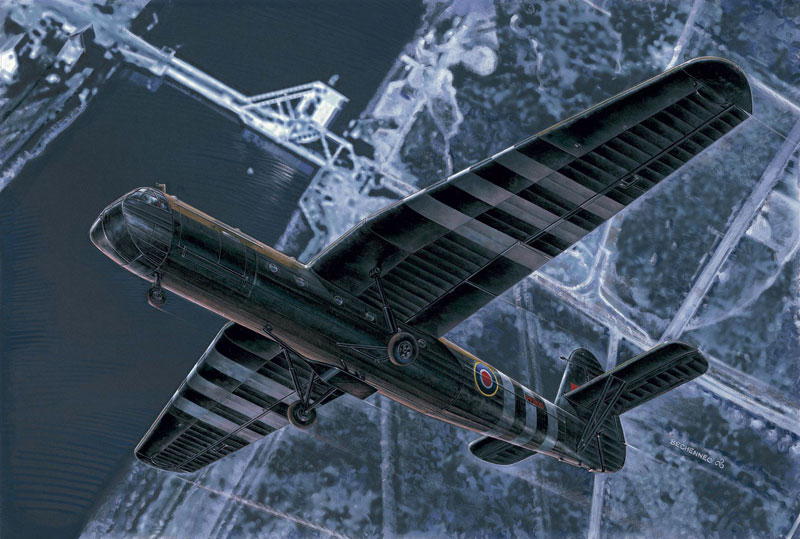 |
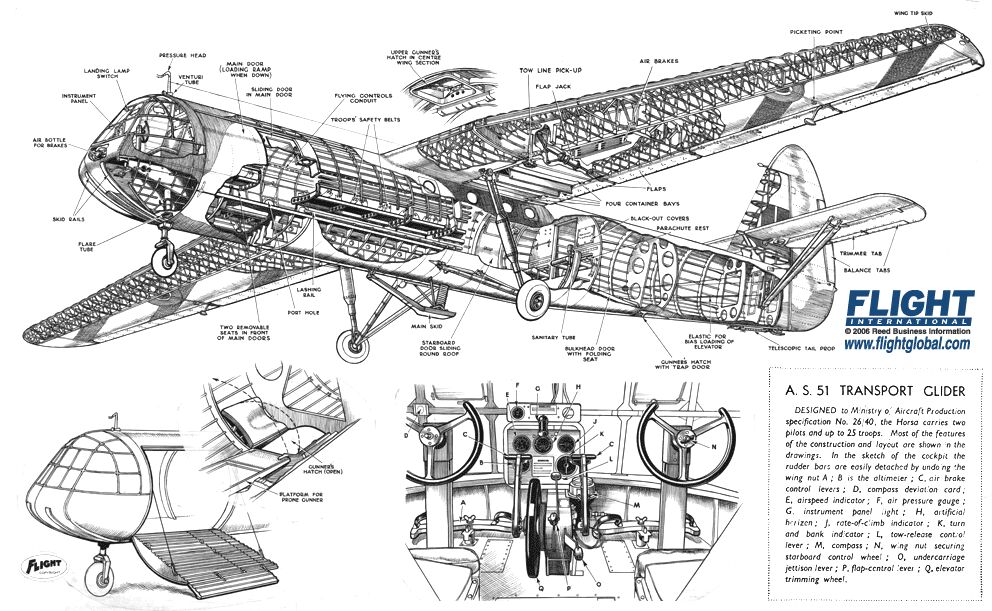 |
| Internet |
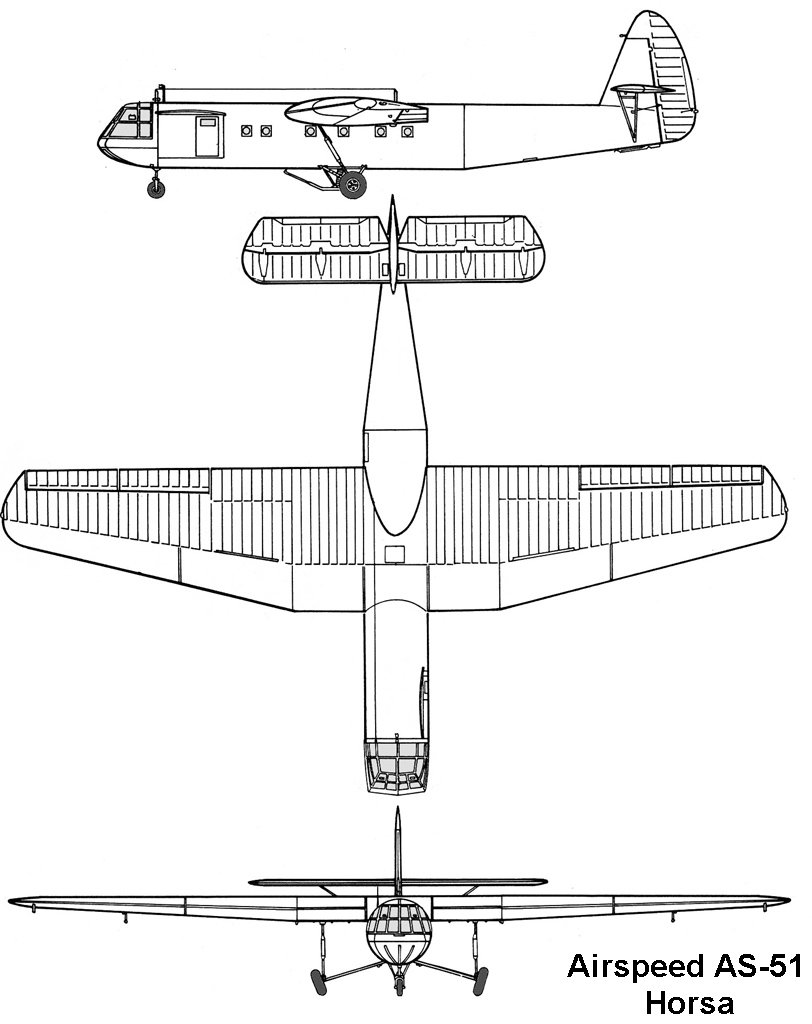 |
| Internet |
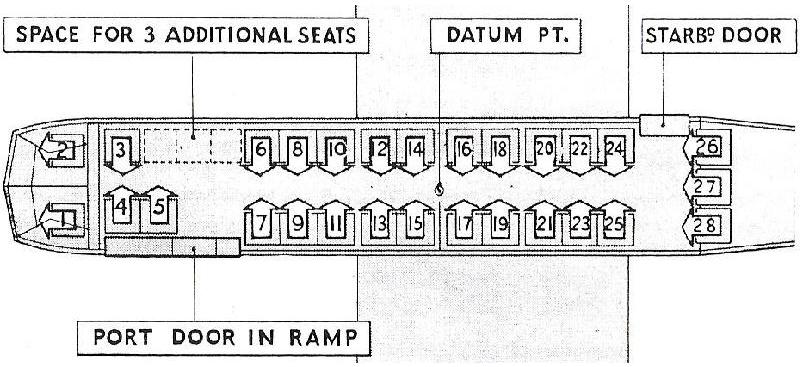 |
| Internet |
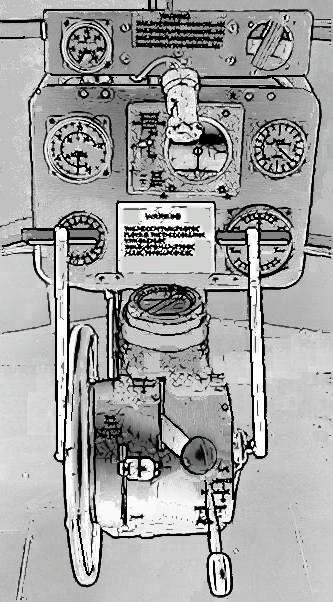 |
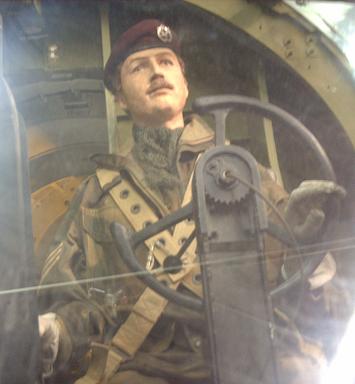 |
| Internet |
Internet |
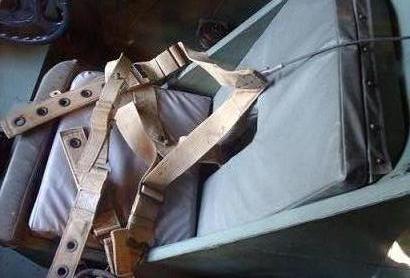 |
| Siege Pilote Pilot seat Internet |
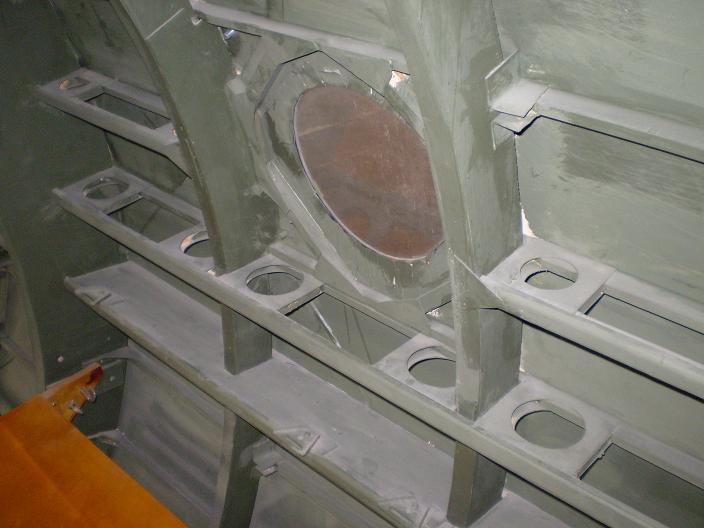 |
| Hublot Porthole Internet |
Utilisateurs Users
.png) |
| Royaume Uni |
Voir Aussi Autres Photoscopes See Also Others Walk Around
DFS 230
Waco
Hamilcar
Autre Photoscope (Other Walk Around ) 1
Airspeed Horsa
Introduction
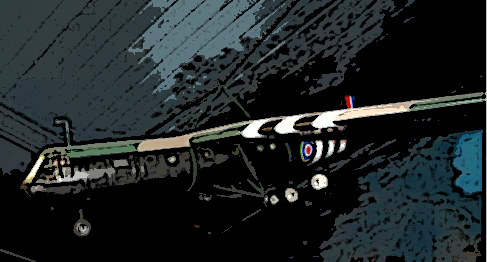 |
Use of Glider for war operation was pioneered by German Airborne forces during WW2
On May 10th 1940 eleven German DFS230 gliders took off from Köln with Eben-Emael fortress of tatget It was a formidable challenge because Eben-Emael fortress, in Belgium, completed in 1935, is a formidable target with an arsenal of six 120mm guns with a range of 16kms eighteen quick-firing 75mm guns and twelve 60mm high velocity anti-tank guns.
Combined with roof-mounted anti-aircraft guns, twenty-five twin machine guns for close-quarter defence and a maze of tank traps
Eben-Emael was no easy nut to crack. But !!! For the follow see here ( soon)
Assault glider provided a means of inserting lightly armed specialist troops, directly to the objective of the attack. Glider troops different of paratroopers arrive at the landing zone in groups, rather than being separated as in a parachute landing
History
On 10 May, 1940, Winston Churchill became British Prime Minister the same day of the fall of Eben Emael fortress Quickly ,on June 22nd Churchill sent the following to the Army Chief of Staff:
“ We ought to have a corps of at least 5000 parachute troops, I hear that something is being done to form such a corps but only I believe on a small scale. Advantage must be taken of the summer to train these forces who can none the less play their part meanwhile as shock troops in Home Defence
On june 21st Central Landing School open at RAF Ringway, Manchester for investigate the logistical requirements for the use of paratroops and glider borne troops. And on August 6th 500 volunteers were being trained as paratroops.
But for Prime Minister parachute delivery of troops was somewhat outmoded and use of gliders gave far greater breadth to any airborne operation and on September 9th 1940 complement of 1,000 men was thought a realistic requirement and of this number 900 would be carried by glider.
Altogether, by Spring 1941, the War Office expected to have 2,700 glider troops and 360 pilots.
Glider Training Squadron had been set up, under the command of Squadron Leader H E Hervey, MC. using Swallow aircraft with propellers removed.
Irony of fate on the four trainer gliders, three had been built in Germany
On September 26th 1940 Duke of Kent watched a demonstration involving two towed gliders.Follow exercices
In octobre 1940 a five-mile night tow was undertaken with two Avro 504s and four sailplanes took place and sixty-six men, from 2nd Commando, were attached to Army Co-operation Command squadrons for preliminary training prior to conversion to glider coxswains (initial name for glider pilots).
In Decembre 1940 first Glider Wing was formed But in spring 1941 events shake up the program when on May 20th Germany captured Crete with airborne troops. So Churchill called for immediate action, and it was agreed that the Army would supply glider pilots with the RAF taking responsibility for qualifying them.
To counter any problems which might arise at parent units with personnel on detached duties, it was also decided to form a new Army Air Corps with two autonomous regiments, the Glider Pilot and the Parachute. The former was established by Army Order on February 24th 1942
. 500 volunteers were being trained as paratroops.
The beginnings
General Aircraft Hotspur
.jpg) |
First Britain use the General Aircraft Hotspur glider . The prototype was built and fly on November 5th 1940.First Hotspur arrived at Ringway on February 6TH 1941 He could carry eight fully-armed troops and had the ability to carry a cargo of 850kg for a Fully loaded it weighed in at 1630kg It had a a length of 12m and wing-span of 14m. 1015 Hotspurs were built during the war.
General Aircraft Hamilcar
.jpg) |
.jpg) |
The specification for this was given in the program called X.27/40
The program research a glider capable of carrying a light tank ( USSR in early 1935 as make this operation with slung pallet-borne T-37 tanks under TB-3 bombers ). The Air Ministry and War Office gave the X.27/40 contract to General Aircraft without going to tender.
Initially designated GAL49, the new glider became Hamilcar
412 Hamilcar were built during the War. He had a wingspan of (33.5m and, fully laden, weighed in at 16329kgThe pilots sat in tandem some 7.5mabove the ground. Passengers were rarely carried, but a total of forty troops could be accommodated in the barn-like cargo area. The glider's main load was the Tetrarch light tank
The Airspeed Horsa
First we found the Slingsby Hengist who his the Horsa's brother ( 18 had been built ) It had only ever been intended as a failsafe if the Horsa had not worked out
.jpg) |
| Slingsby Hengist |
The Horsa was considered sturdy and very manoeuvrable for a glider. And he was considerably larger than the American Waco CG-4A (. 30 troops and a substantially larger supply load compared to the CG-4A's maximum load of 13 Glider Infantry troops . It also differed from the CG-4A in that it was constructed almost completely of wood. Its tow line harness yoke was attached to both wings, unlike the CG-4A the tow line of which attached to the nose of the aircraft.
Following X.26/40 note Airspeed Ltd was given the task of producing a 25-seater, which could also be used for carrying materiel, such as jeeps, trailers. the Air Ministry ordered seven prototypes (DG597, DG603, DG609, DK346, DK349, DK353, and DK358). Two of these when fabricated were assembled were assembled at Fairey’s works, these being the flight test examples. Total Production was by Airspeed and subcontractors including Austin Motors and Harris Lebus Both Horsa variants were used by the USAF.The finished glider had a total of 32 seats, though the operational maximum fitted was 28, which was the number of men in a standard Airborne platoon. The glider was named Horsa, after the 5th Century German mercenary. The prototype took to the air on September 12th 1941 behind bomber Amstrong Siddeley Whitley The first production model appearing in June, 1942 and soon after this date the Horsa began to enter service with the RAF, towed for operational purposes by powered aircraft of RAF Transport Command. They were used to carry men and equipment of the Air Landing Brigades of the 1st and 6th Airborne Divisions, piloted by men of the British Army’s Glider Pilot Regiment but also, as and when was necessary, by RAF pilots. It is impossible to quote accurate production figures for the Horsa. These comprise 470 Mk I and 225 Mk II built by Airspeed plus the original seven prototypes; 300 Mk I’s and 65 Mk II’s by the Austin Motor Company; and 1,641 Mk I’s and 1,271 Mk II’s by subcontractors in the woodworking industry, the majority produced by the furniture manufacturer Harris Lebus. This amounts to a grand total of 3,799.
Horsa wild be built in a number of sections, and to use facilities not needed for more urgent production, and as a result production was spread across separate factories which limited the likely loss in case of German attack .
The Horsa was a high-wing cantilever monoplane with wooden wings and a wooden semi-monocoque fuselage. The fuselage was built in three sections bolted together, the front section was the pilot's compartment and main freight loading door, the main section was accommodation for troops or freight, the rear section supported the tail unit. It had a fixed tricycle landing gear and it was one of the first gliders equipped with a tricycle under carriage for take off. The main gear of the tricycle undercarriage was also jettisonable and a nose wheel in combination with a central shock absorbing skid could be used for rough ground landings.
He has a wing-span of 27m and a total length of 20m, a fully weighed of 6.91tons .
On operational flights this could be jettisoned and landing was then on a sprung skid under the fuselage. The wing carried large "barn door" flaps which, when lowered, made a steep, high rate-of-descent landing possible — allowing the pilots to land in constricted spaces.
The pilot's compartment had two side-by-side seats and dual controls. Visibility was excellent through the large perspex windscreen Aft of the pilot's compartment was the freight loading door on the port side. The hinged door could also be used as a loading ramp. The main compartment could accommodate 15 troops on benches facing each other on benches along the side Passengers entered the Horsa through two doors (one forward of the port wing and one aft of the starboard wing) which slid up inside the fuselage
The fuselage joint at the rear end of the main section could be broken on landing to assist in rapid unloading of troops and equipment on landing. Supply containers could also be fitted under the centre-section of the wing, three on each side. The tail section was designed to be removed and ramps were then attached to the fuselage to allow the load to be taken out. Occasionally, a cordtex explosive was used to blow the tail off.
.jpg) |
The later AS.58 Horsa II had a hinged nose section, reinforced floor and double nose wheels to allow loading and unloading of equipment. The tow was attached to the nose-wheel strut, rather than the dual wing points of the Horsa I.
In operation he was towed by a C47 Dakoa or a Halifax , Stirling Albemar Bombers
Versions
AS.51 Horsa I
Production glider with cable attachment points at upper attachment points of main landing gear
AS.58 Horsa II.
Development of the Horsa I with hinged nose, to allow direct loading and unloading of equipment, twin nose-wheel and cable attachment on nose-wheel strut
US Gliders
WACO CG-4A
The Weaver Aircraft Company (WACO) of Troy, Ohio, did not begin construction of its CG-4A (rechristened 'Hadrian' by the British) until mid-1941. The first was delivered in April, 1942 and, by the end of the war, close on 14000 had been built. Of these, 750 were supplied to the GPR.
The CG-4A had a wingspan of (25m, was 14m long and had an all up weight of 3400kgs . Its fuselage was built of steel tubing. The wings were of a wooden rib construction and covered in plywood. The floor was a honey-combed plywood pattern. The whole aircraft was covered in cotton fabric. The cockpit lifted to allow loading and unloading of the cargo section.
WW2Allied Airborne operations with Glider
Operation Freshman November 19th 1942
Operation 'Freshman' set out to destroy German heavy water production at Vermok in Norway. Two Horsa gliders were used, each carrying fifteen Airborne Engineers. It was a failure Flying over the Landing Zone for an hour without realising, the decision was made to turn for home. Both gliders and one tug crashed on the return leg, with several fatalities and injuries. Norwegian civilians did what they could for the survivors but could not prevent their capture by the Germans. The severely wounded were strangled to death and the rest shot by firing squad on January 18th 1943
Operation Husky Sicily Landings 1943 July 9, 1943, and ended August 17
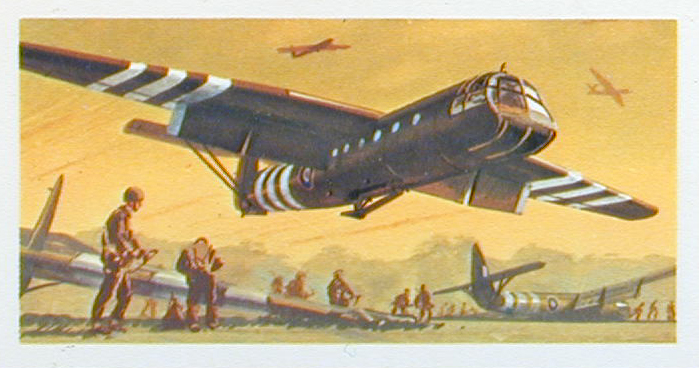 |
The 2nd South Stafford’s were sent to North Africa in May 1943 as part of the 1st Airborne Division, to take part in the first Allied invasion of Europe, the Sicily Landings. Action took place on 10th July 1943 and were preceded by dropping parachute and glider borne troops to seize and secure vital ground and bridges in advance of the seaborne landings. This was the first major airborne assault attempted by the Allies
Second Chindit Campaign Spring 1944
Second Chindit operation which took place between March and July 1944. This involved six groups of brigade equivalence to captured and held, prevented the movement of Japanese troops and supplies to oppose the main Allied advance through Burma. Finally, combined with Chinese troops, they captured Mogaung, one of the two Allied objectives laid down at the Quebec Conference and materially assisted in the capture of Myitkyina but These victories were gained at terrible cost They lost 150 killed and more than 250 wounded, disease led to a further 180 men being evacuated
D Day Operation , Operation 'Tonga'
20% of the total material delivered to the beach-heads by air was done by glidersShortly after midnight on the morning of 6th June 1944, a force of six Horsa gliders carrying 139 men of 2 Oxf & Bucks, together with 30 Royal Engineers, all under the command of Major R.J.Howard, landed in darkness to capture the bridges over the Caen Canal (Pegasus Bridge) and the River Orne (Horsa Bridge) by surprise coup de main raid.The attack on Pegasus Bridge was entirely successful and the bridge was held against fierce counter attacks until the Oxf & Bucks, joined by 7 Para, were relieved by sea borne troops.By the end of D+2, 6th Airborne Division was fully established on the East bank of the River Orne and held this vital sector for several months against repeated enemy attacks.
D Day Operation , Operation Mallard
.jpg) |
This operation was a first in military history. Twenty-nine Hamilcars carried an armoured reconnaissance regiment direct to the battle-field. In addition, 229 Horsas carried a mixture of infantry and heavy support weapons. The glider of Capt. John Morrison, from 'G' Squadron, carried a platoon of the Ox and Bucks: But German opposition was slight and soon surrendered leaving the British with three mortars and a collection of bombs. By D+2 the order came for all pilots to march to the beaches for the journey home.
Operation Dragoon Aout 15th 1944 South France
. Horsa also took park in the invasion of Southern France.
Arnhem Operation Market Garden September 17–25, 1944)
.jpg) |
The assault of part of 1st Airlanding Brigade under Brig Hicks, was split into two elements with B and D Companies arriving in the first lift. After securing the landing area they were ordered to move forward to the Arnhem Bridge held by 2 Para and set off with their CO, Lt Col McCardie. They fought their way through several ambushes before being held up by strong forces in the area of St Elizabeth's Hospital.
The remainder of the battalion, arriving in the second lift, was sent on behind, having to fight through at least one of the ambushes that had held up the leading elements on the previous day. However, in spite of attempts to coordinate an advance with 11 Para, 2nd South Staffords were unable to reach the bridge and lost very heavily in the inevitable street fighting en route. The Glider Pilot Regiment suffered 90% casualties at the battle of Arnhem
Ardennes The Battle of the Bulge December 1944 January 1945
Glider were rushed back to Belgium to help counter the massive German breakthrough, After extremely hard fighting in very cold weather, the German advance was turned into disaster when the British and American troops closed the neck of the bulge.
Operation Varsity Crossing of the Rhine March 24th 1945
Operation Varsity was the biggest and most successful airborne operation ever. Its purpose was to land 14,000 men of the British 6th and American 17th Airborne divisions on the German held East bank of the River Rhine,The task was to suppress German artillery and small arms fire, which would have opposed 21st Army Group's crossing of the river Each glider was given the task of landing right on top of its specific objective. 392 Horsa gliders and 14 Hamilcar gliders were used in this operation. Many of the Horsa gliders were flown by Royal Air Force pilots attached to the Army's Glider Pilot Regiment.
Tecnical Data
Empty weight 3,804 kg
Loaded weight 7,045 kg
Payload
Crew 2C
Capacity 25 troops
Length 20.43 m
Wingspan 26.83 m
Height 5.95 m
Wing area 102.6 m²
Speed Max 242 km/h
Gliding Speed 160 km/h






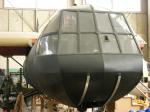
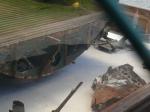
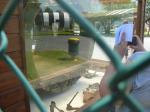
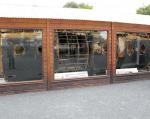
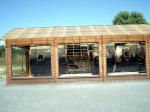
.jpg)
.jpg)





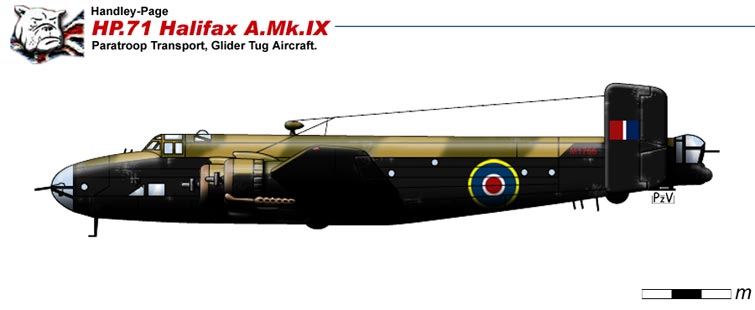
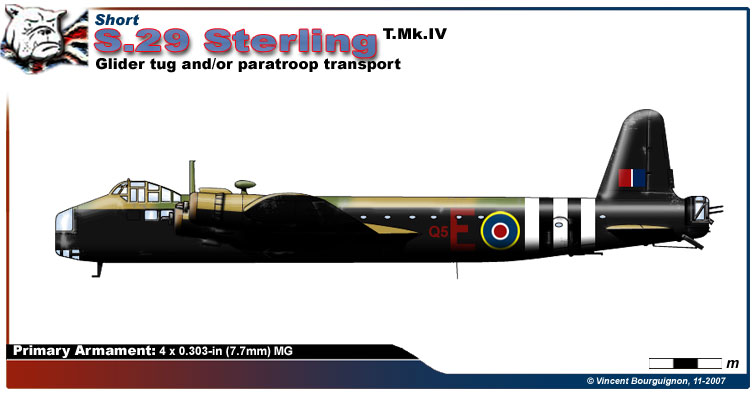
.jpg)
.jpg)
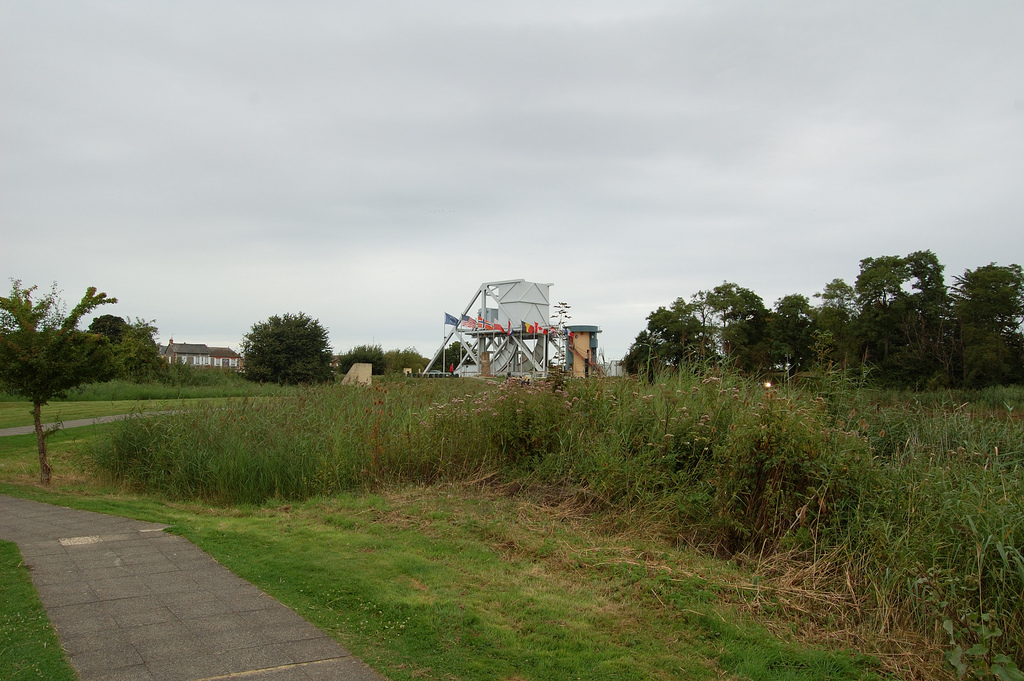
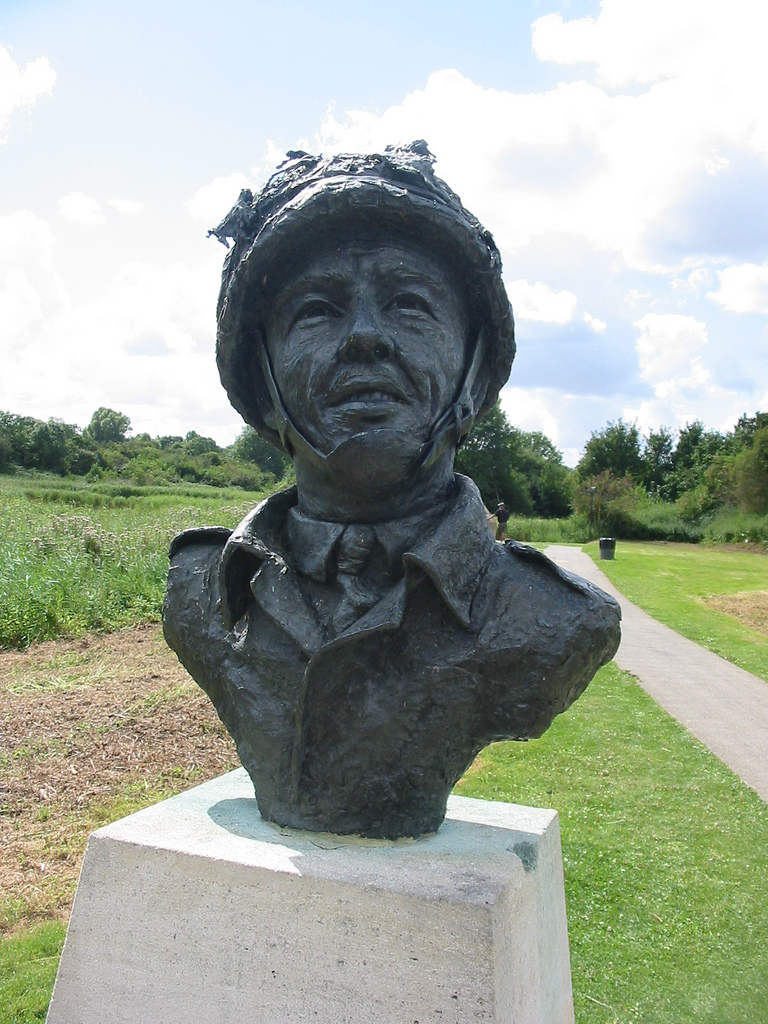

.jpg)
.jpg)
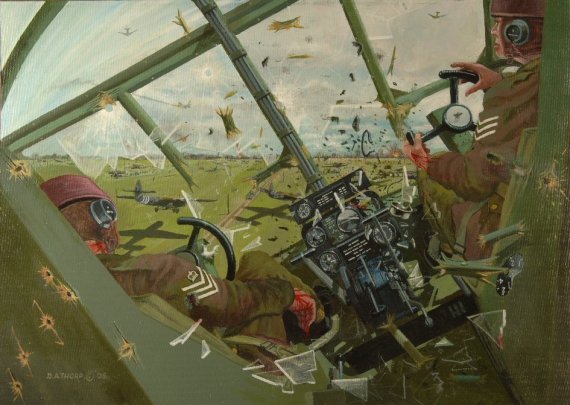








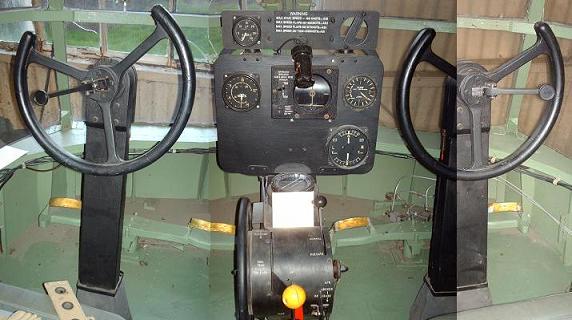
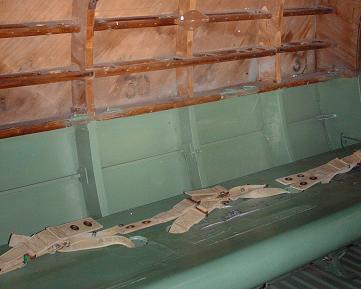
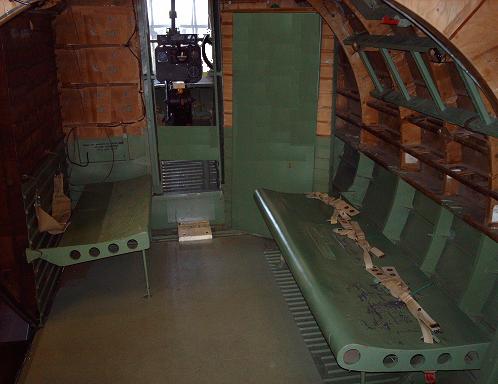
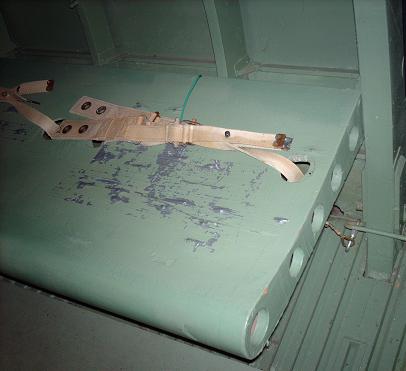
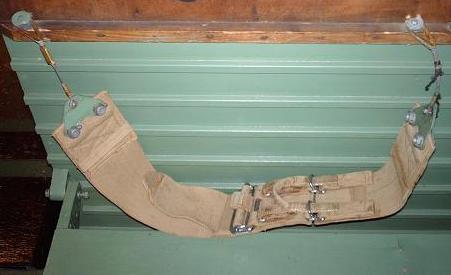

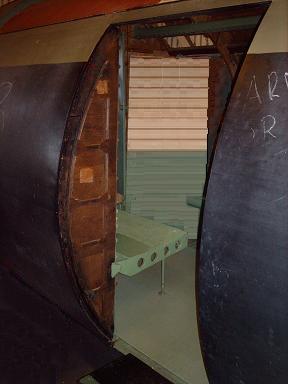
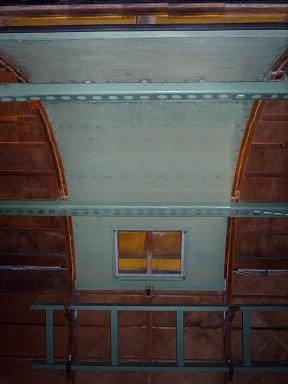
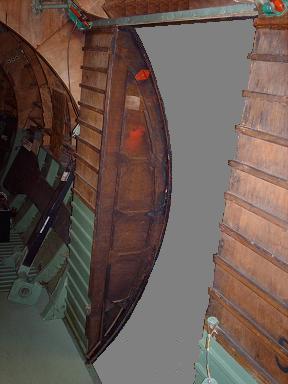
.jpg)
.jpg)
.jpg)
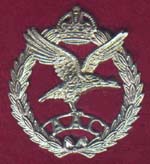
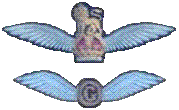
.png)
.jpg)
.jpg)
.jpg)
.jpg)
.jpg)
.jpg)
.jpg)
.jpg)
.jpg)
.jpg)
.jpg)
.jpg)
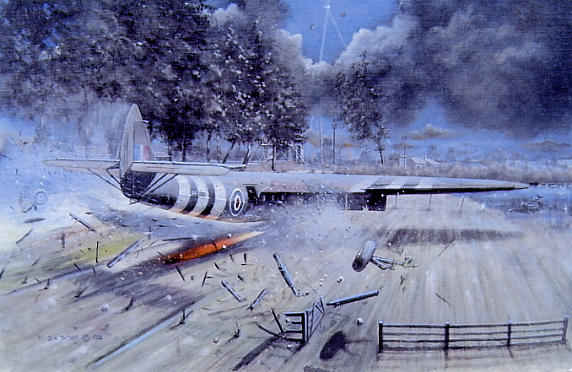
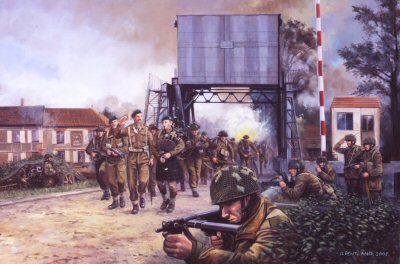
.jpg)
.jpg)